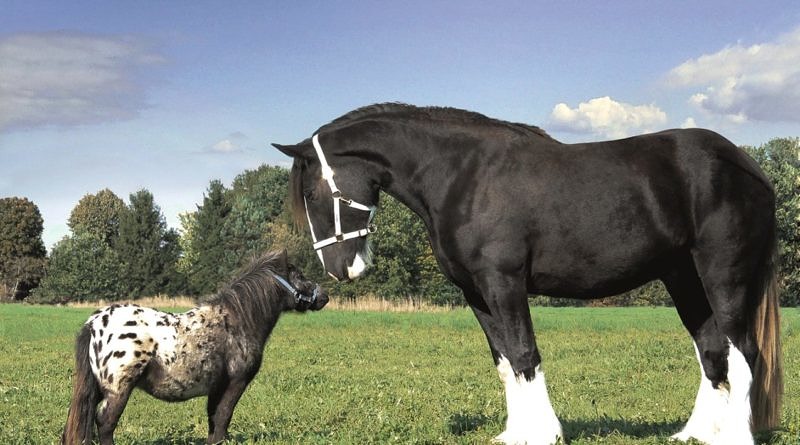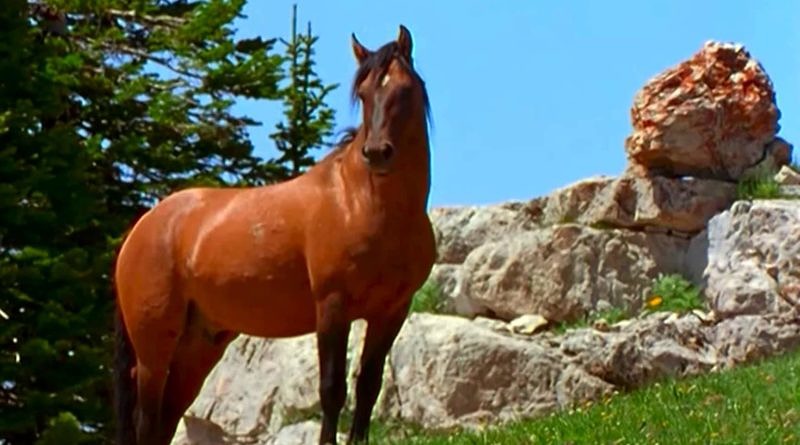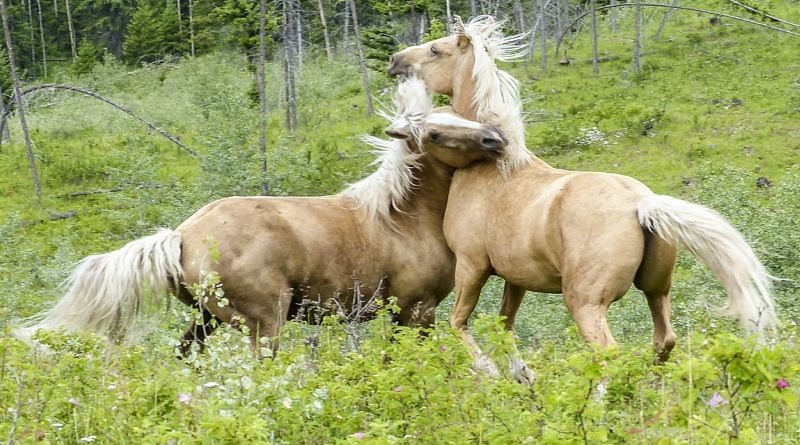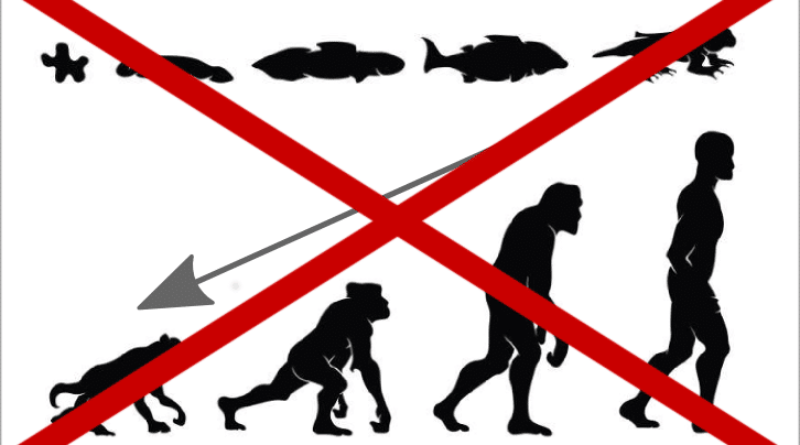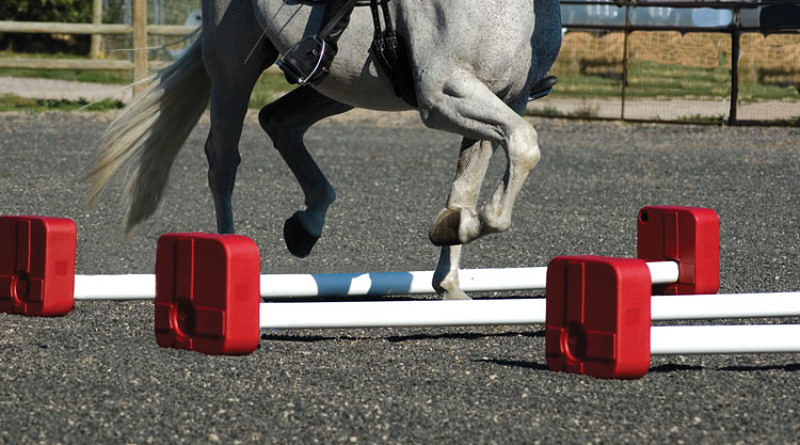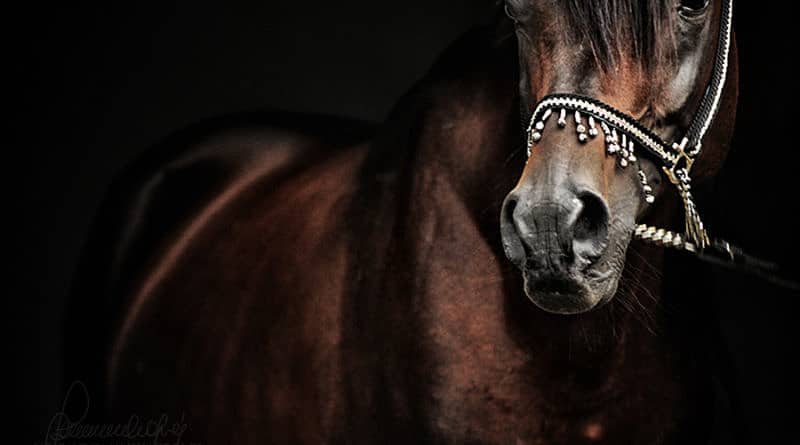Introduction to Evolution – Part 1: The Basics
Evolution underpins all of modern biology. From spooking to ulcers, understanding evolution helps you make sense of your horse. This article covers the basics.
As animal lovers in general, and equestrians in particular, we are inevitably fascinated by living things. We all want to care for and work with our horses as well as we can. And to do this, we need to understand as much as possible about them. Why are horses prone to ulcers? Why are they scared of plastic bags? How can we choose the best training method for a particular situation?
We are incredibly lucky to be living at a time when medicine and biology have advanced to the point where they can not only help us with health problems, but also guide our understanding of horses more generally. This is where learning about evolution comes in.
Modern biology is based on evolutionary theory, and learning the basics of evolution is absolutely essential if we want to understand our fellow creatures (or ourselves). Evolution doesn’t just explain things like long necks in giraffes, or the camouflaging properties of cheetah fur. It also explains emotions and behaviour – love for offspring, affection between friends or anger towards rivals. Understanding evolution allows us to think creatively and inventively about how we can give our horses the best care and inspire them to give us their best.
What is evolution?
Evolution is actually incredibly simple. Evolution is change in living organisms across generations. An example of this in humans is the evolution of the ability to digest milk as adults (this is called ‘lactose tolerance’). If you are descended from Europeans then you might think of this ability as perfectly normal – we drink milk and eat milk products (butter, cheese) all the time!
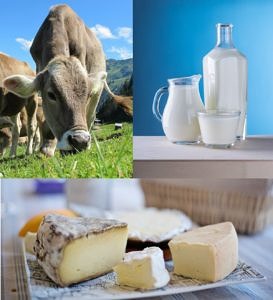
You probably don’t realise that, globally, this makes you a bit of an oddity! Only around one third of all humans alive at the moment have this ability. While of course babies can digest milk, this capacity is normally lost after weaning. This happens in almost all mammals including most humans. Ever notice that Japanese and Chinese food doesn’t involve any milk, cream or cheese? This is because most adults in East Asia simply can’t digest milk! And if you jumped in a time machine and went back 10,000 years then you would find that hardly any humans would have this ability. So over time, some human groups changed – in other words, they evolved!
Just realising that evolution happens is not very useful though. We need to know how and why! Fortunately, the underlying mechanisms of evolutionary change are also very simple. There are only three conditions necessary for evolution to occur. If you can understand these three things, and the way they work together, then you understand evolution! The conditions are variation, inheritance and selection.
Variation
For evolution to work, there have to be differences between individual organisms. If we jumped in our time machine and gave out bowls of cornflakes and milk to the people living in Europe 10,000 years ago, we’d find that almost everyone would get very sick, probably succumbing to explosive diarrhea. It would all be a bit of a mess! But we might find a couple of people who were fine, and perhaps even demanded more. Just like hair colour, eye colour and height, there is variation in the ability to digest milk.
Inheritance
The second thing we need is a way for differences to be passed down to offspring. We know that this works through genes, but for the purposes of broadly understanding evolution we don’t need to know anything about genetics. All we need to understand is that there is a way for offspring to inherit differences from their parents. And you almost certainly already know this – children often look like their parents because they have inherited some of their parents’ features. Anything that is genetic can be inherited, including things like being able to digest milk.
Selection
The last component of evolution is that there has to be a difference in how many descendants different individuals produce. Let’s think about our group of ancient humans again. At some point they start keeping cows, maybe for meat rather than milk. But the few people in the group who could digest milk would get a bonus: they could also drink the milk. Extra food makes a big difference if you don’t normally have very much, so these lucky people would become healthier than the rest of the group. They would be more likely to live longer, be more attractive as mates (generally speaking, we are more attracted to healthy people), and produce more children.
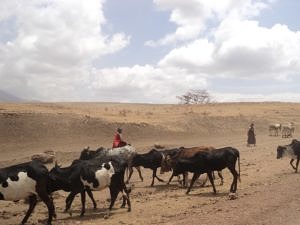
Putting the pieces together
Evolution really is just a question of applying a bit of common sense to the three ideas outlined above. If we run the clock forward on our ancient humans, what will happen?
Well firstly, we notice that there is variation in their ability to digest milk. To start with there may have been just one person who got very lucky, and had this handy ability. This person, let’s call him Mr Milk-Drinker, ends up healthier than the others because he has a bit more food. This has knock-on effects. Because he is better fed he has more energy to collect even more food and raise even more cattle. He is more successful and healthier than other people, so of course everyone wants to have sex with him! He has more children, and his children get more food than others. In other words, there is a selection for the ability to digest milk. But this bonus doesn’t end with him: some of his children also inherit the ability to digest milk. If you jump forward a hundred years you might find that the Milk-Drinker family is doing very well! There are now 20 Milk-Drinkers, and they are steadily dominating all the best stuff in the village.
So what will happen if you carry on skipping through time? After a thousand years, we check in again, and find that everyone in the group are now Milk-Drinkers. And that is evolution! The humans changed over generations. You might wonder why, if milk drinking is so great, it hasn’t spread all over the world. Well, it still might! We could be in the middle of an evolutionary change that eventually affects all humans.
Even though the basic ideas behind evolution are simple, and the process of evolution is just a bit of common sense applied to those ideas, not everything is quite as straightforward!
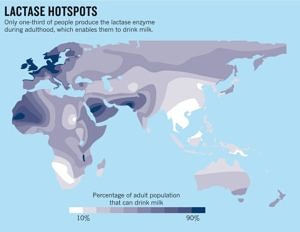
Variation expanded: genes and mutations
If we take a look at any group of horses we are likely to immediately see variations. Whether it is coat colour, height, leg length, face shape or personality, we can all recognise horses as individual creatures. But not all differences are inherited. If you dye your horse’s tail blue they will not suddenly start producing foals with blue tails! The only differences that are important for evolution are differences that can be inherited. In other words, the differences that matter are differences that are in an organism’s genes.
Genetics is a different topic, but it is worth understanding a couple of details. Firstly, some differences are linked to single genes, whereas others are linked to multiple genes. Some coat colours in horses (grey, for example) are the result of one specific gene. Other differences are affected by dozens, hundreds or even thousands of different genes. Think about horse height for example. Maybe there is one gene that controls how much growth hormone is produced at a certain age, a second gene influences how easily the horse creates bone tissue, a third gene controls whether bones tend to grow more lengthwise or widthwise and a fourth gene might affect how well a horse uses its food for building muscle and bone. All of these genes would be involved in determining the height of a horse.
We know that any existing group of horses we look at have variations, but where do those variations come from? This is where mutation comes in! If we go back to our ancient humans for a second, we can easily understand that, if one lucky person has the ability to digest milk, then that can spread. But where did that ability come from to start with?
The answer is mutation. Mutations can happen for a variety of reasons. For example, at some point in the process of reproduction our genes are copied. Sometimes mistakes are made when the gene is copied, so children can end up with very slightly different genes to their parents. And this is what happened: one of the ancient humans, completely by chance, ended up with a mutant gene that happened to be very helpful at the time. We often think of mutations as being negative things, but in fact most mutations don’t have any effect, and we are all born with hundreds of mutations. And of course, some mutations are useful – you might have an awesome mutation that eventually spreads throughout humanity!
Inheritance expanded: sex is awesome!
Variation is only important when it can be inherited. But how does inheritance actually work? This is a topic that we’ll cover in more depth in a genetics introduction, but it is worth considering for a second how great sex is!
The very first living things never got to have sex. They reproduced simply by cloning themselves. All of their offspring would have the same genes as their parents, aside from a few mutations. This is still the case for most life on Earth today – for example bacteria, many plants, and even some animals reproduce without sex.

If it is possible to reproduce without sex then why do we, and horses, bother? One big reason is that sexual reproduction involves mixing the genes of two different individuals. This means selection can work on the new variations and combinations of existing genes. As a result, sex has been fantastically successful – from trees and fungi to birds and bees.
Selection expanded: who gets to breed?
Remember, selection involves any sort of pressure that causes a difference in the number of offspring individual organisms produce. A selection pressure can therefore be from pretty much anything! The weather, the terrain, other living things, food availability, even others of the same species. For example, when ancient humans started to keep cows they introduced a new selection pressure – people who were able to drink milk were able to take better advantage of their situation.
For horses, one selection pressure was the presence of predators. Horses that could run faster would be more likely to survive to breed, so there was a pressure to be able to run well. But it isn’t just running quickly that is important, it is running with the rest of the herd – there is safety in numbers. It is easier for predators to attack and chase down isolated horses, so there is also pressure for horses to keep up and move with their herd. The best position for a horse is probably to be close to the front of the herd. Think of the old joke about running away from a bear – you don’t have to be faster than the bear, you just have to be faster than your friend! This might explain why horses will engage in that seemingly odd behaviour of rushing to catch up and even overtake other horses, and then immediately settle down.
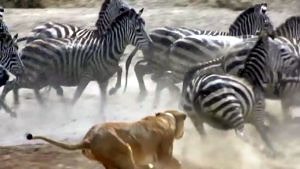
The crucial thing to remember with selection, though, is that there are always lots of different pressures operating at the same time. There is an advantage for horses who react quickly to potential danger – the split second advantage of spooking before knowing what something is might be enough to save a horse’s life! On the other hand, horses who continually spooked at absolutely everything would constantly be using energy and they would end up malnourished. Between the different selective pressures we end up with some sort of balance – horses will often over-react, but they also calm down again quickly, and learn to ignore things.
Selection pressures can also be imposed or changed by other animals. If a new type of predator arrives then this will introduce a new selection pressure. When killer whales evolved and expanded across the oceans (around ten million years ago) they imposed a new selection pressure on the marine mammals that they hunted and competed with – it seems likely that many whale and seal species were driven to extinction as a result. Another example of this is bird life in New Zealand. Birds in New Zealand evolved without the pressure of many ground hunting predators (no snakes, for example), and as a result many of the birds evolved to be flightless. The introduction of predators like stoats, weasels and rats suddenly imposed a new selection pressure: 42% of New Zealand’s terrestrial birds are now extinct, and many more are threatened (including the awesome kea) .
Humans also change selective pressures directly. If you take a bunch of horses, and only let the strongest, fastest and most physically capable breed, then you have imposed a new selection pressure. When humans do this, they almost always change other pressures at the same time. If you compare a sport horse with a Przewalski’s horse it is obvious that in many ways the sport horse is a lot ‘fitter’ – it is bigger, stronger and faster! But imagine if you released a sport horse to live out with a herd of Przewalski’s. He might be able to win fights against Przewalski’s stallions, and escape danger more easily when necessary, but he may very likely die of starvation the following winter.
In order to produce sport horses, humans not only had to choose and breed the strongest and most capable horses, they also had to ensure that the horses had access to lots of high quality food. The larger, stronger horses needed to sustain the high energy expenditure required by the muscles, body size and quick metabolism of a sport horse. In other words, humans had to remove the selective pressures involved in finding food and making the most efficient use of it.
Remember that evolution doesn’t actually ‘care’ about any particular characteristic, like speed, endurance or strength. Favoured characteristics will simply be whatever combination of things happened to produce the most offspring. This is because the only relevant measure in evolution is actual reproductive success, which is determined by a complex balance of many different selective pressures. It is also worth remembering that these pressures change over time. For example, a warmer climate could remove a selection pressure for a thick coat, while at the same time increasing a selection pressure for conserving water more effectively when sweating.
This article covers the basics of evolutionary theory. In the next part we’ll look at some common misconceptions and outline how you can use an evolutionary perspective to help you better understand your horse: see Introduction to Evolution – Part 2.

